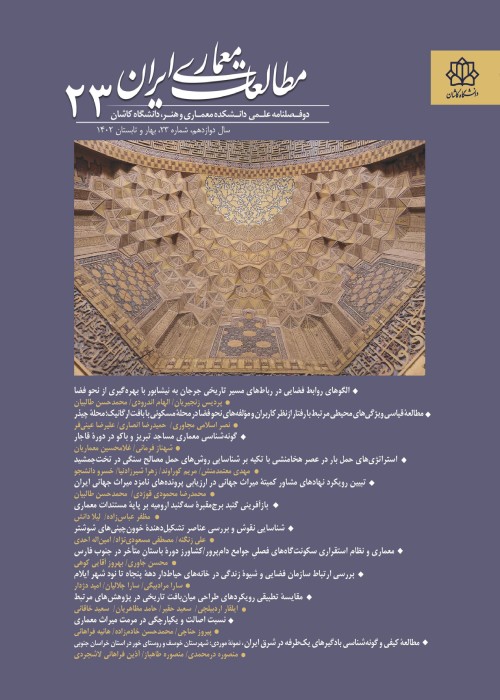Cultural Criteria in the Evaluation of Undergraduate Educational Programs of Architecture in Iran
Author(s):
Abstract:
The architectural profession and architectural education involve procedures deeply rooted in the cultural, historical, geographical and social context of any country. One of the major goals of architectural education should be training architects who are able to practice architecture based on their understanding of cultural characteristics. Thus today, the significant question regarding architectural education is whether the current system in Iran can prepare young architects to respond to regional/vernacular concerns and design ingeniously in the cultural context of their country. Content analysis method was applied in evaluating architectural education using cultural criteria. First, the definitions of culture were studied, and next, three major criteria were defined including world-view and beliefs, history, and geography. Each of these criteria consists of different factors that influence architecture, which were derived using the Delphi method. Second, the current architectural curriculum in Iran was evaluated based on the criteria and factors defined in the first step. In this evaluation, undergraduate curriculums of architectural education in three main programs were selected and studied: The Undergraduate Program of Architecture approved by the High Council of Programming of the Ministry of Science and High Education (1998), and The Revised Undergraduate Programs of Architecture in Shahid Beheshti University (2005) and University of Tehran (2012). The results estimate how much value is given to each cultural criterion in the text of each course description in the curriculum, which is categorized into four groups of courses: architectural design, history and theory, building techniques, and electives. The results show that the values given to cultural criteria of world-view, history, and geography are not consistent across the three programs and that the curriculums lack an overall proper consideration of cultural criteria. Each of the four categories of courses offers a good capacity to include cultural criteria as rendered in course descriptions. Revision of architectural education programs with a content analysis approach and developing new courses offers an opportunity to compensate for the shortcomings of the current educational system according to cultural contexts.
Language:
Persian
Published:
Journal of Iranian Architecture Studies, Volume:5 Issue: 10, 2017
Pages:
141 to 160
magiran.com/p1666056
دانلود و مطالعه متن این مقاله با یکی از روشهای زیر امکان پذیر است:
اشتراک شخصی
با عضویت و پرداخت آنلاین حق اشتراک یکساله به مبلغ 1,390,000ريال میتوانید 70 عنوان مطلب دانلود کنید!
اشتراک سازمانی
به کتابخانه دانشگاه یا محل کار خود پیشنهاد کنید تا اشتراک سازمانی این پایگاه را برای دسترسی نامحدود همه کاربران به متن مطالب تهیه نمایند!
توجه!
- حق عضویت دریافتی صرف حمایت از نشریات عضو و نگهداری، تکمیل و توسعه مگیران میشود.
- پرداخت حق اشتراک و دانلود مقالات اجازه بازنشر آن در سایر رسانههای چاپی و دیجیتال را به کاربر نمیدهد.
In order to view content subscription is required
Personal subscription
Subscribe magiran.com for 70 € euros via PayPal and download 70 articles during a year.
Organization subscription
Please contact us to subscribe your university or library for unlimited access!



